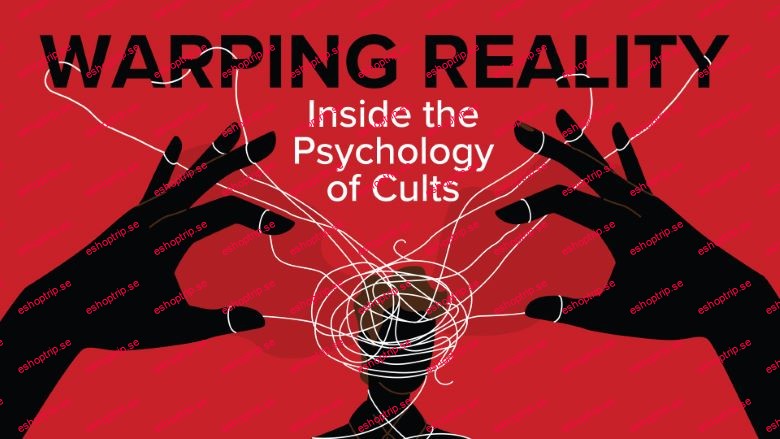Released 10/2024
MP4 | Video: h264, 1280×720 | Audio: AAC, 44.1 KHz, 2 Ch
Genre: eLearning | Language: English | Duration: 12 Lessons ( 6h 15m ) | Size: 5.4 GB
Many of us have a deep, personal drive to seek inner fulfillment. We want to grow as individuals, explore our own potential, and make an important and lasting contribution to the world. It’s easy to run into groups that promise to help us along the way, and some of these groups are sincere. When a group, or even a charismatic individual, promises to help us meet our goals but then corrupts our good intentions for their own gain—when they exploit people in an organized fashion—that’s when the situation turns into something destructive. That’s when you may have become a member of a cult. And it can happen much more easily than you might think.
In the 12 fascinating lectures of Warping Reality: Inside the Psychology of Cults, you will learn about some of the most widely known cults of modern times. But unlike any standard news reporting or documentary about groups like The Peoples Temple, the Manson “Family,” the Branch Davidians, Heaven’s Gate, Children of God, Unification Church, or NXIVM, your expert, Dr. Wind Goodfriend, will help you explore the psychology of these cults. How could these cult leaders have committed such heinous crimes under the guise of “helping” members in their development? And why is it so easy for cults to bring people into the fold?
There are thousands of cults in existence right now, so working to understand how cults operate—and why even skeptical, well-informed people can fall prey to their promises—is a crucial undertaking for the sake of your safety and that of your loved ones.
Meeting Former Cult Members
In this course, you will not only learn about cults, but you will also meet two former cult members who are willing to share their stories. They explain what led them to join these groups, what they had hoped to get from the groups versus the reality, and why they each stayed for over a decade before walking away.
You’ll meet Alexandra Amor, author of the award-winning Cult, A Love Story, as well as numerous other books, both fiction and nonfiction. Alexandra discusses her involvement with a cult called The Circle located in British Columbia. When she joined, it seemed to be just a group of people who were all interested in spiritual growth, with a leader who could help guide Alexandra’s spiritual maturation.
You’ll also meet Tom Heinzen, a professor emeritus of psychology and author and coauthor of several books. Tom joined a group called Salem Acres in rural Illinois. It seemed to be a group of very loving people who were simply working the land of a rundown farm and building apartments. Alexandra and Tom eventually realized the groups they had joined were not for their benefit—not at all.
Dr. Goodfriend will introduce you to the “eight deadly sins” (identified by Robert J. Lifton) that are often used to characterize cults. These traits become more than simple bullet points or guidelines when revealed through the real-world experiences of Alexandra and Tom. The traits include
Milieu Control. This type of control involves the control of all communication within the group and also between the group and the outside world.
Demand for Purity. Cult members receive constant judgment from the cult leader and the group members. Standards of behavior are set impossibly high, with the cult leader being the only judge. Punishments are imposed when group members step over the line.
Doctrine over Person. The cult leader gaslights members to the point that they question their own instincts and perceptions, warping their own thoughts and memories.
The Psychology of Cult Leaders
Many books and documentaries have described cult leaders, but here you will dive below the surface to reach the “why” of these charismatic and destructive individuals. What is the psychological profile of a cult leader? What are the personality traits or circumstances that contribute to the cult leader’s rare ability to amass a loyal following and their malevolent mindset?
Most cult leaders suffered through a traumatic childhood. For those individuals, their childhood trauma left them with a pathological need to control everything and everyone in their environment as a way of avoiding that same hurt ever again. If that pathology is combined with the ability of a master manipulator, the individual can control a large following.
When analyzing the “why” of a cult leader’s behavior, you will consider three major psychological factors
Narcissistic Personality Disorder. This disorder is noted in people who have a grandiose sense of their own importance and believe they are destined for greatness. Some psychologists believe this is actually a mask for deep-seated insecurity, which could be one reason they cannot tolerate anyone questioning their authority.
Antisocial Personality Disorder. People with this disorder may behave impulsively and/or violently and may be manipulative and avoid responsibility. Both people with this disorder and narcissists can exhibit a chilling lack of empathy for others.
Psychopathology. While “psychopath” is not an official diagnosis, it is a term often used in the criminal justice system. It can include the disordered traits listed above, as well as a superficial charm. Without this key feature of superficial charm, cult leaders wouldn’t be able to attract a consistent stream of new followers.
You Would Never Join a Cult … Would You?
Chances are each of us is certain we would never join a cult. We like to think that we would never be so gullible as to give up all our possessions and freedoms simply because some fake guru told us to. We would never cut all communication with our family just because a charismatic grifter said our earthly ties were destroying our spiritual ascent. We would certainly never allow our children to be sexually abused by a self-proclaimed prophet who said it was for the benefit of the group’s salvation.
And yet many thousands have done these things—and worse. In 1978, more than 900 members of Jim Jones’ Peoples Temple were murdered (including 300 children) or committed “revolutionary suicide” because Jim Jones told them to.
We imagine cult members to be desperate, ignorant, hopeless individuals who would follow any leader and believe any doctrine. But that is not at all what social scientists have found. Instead, they have found that people who enter a cult are from all educational levels, religions, and economic and ethnic backgrounds. As a group, they are neither desperate nor ignorant.
While a common profile of a typical cult member doesn’t seem to exist, cult members do seem to have several things in common. They tend to be
Going through some type of major life transition;
“Seekers” who are looking for a purpose in life or a community to be a part of; and
Capable, industrious, and well-liked people who believe the cult will help them become a better person or help them make the world a better place.
It is not the cult members who were interested in cult membership to abuse and betray others, but it is the cult leader who has lied to, manipulated, and used their members in fraudulent and violent ways. Learning about cults, and the psychology of their leaders, is the best way to limit their ability to gain control over our communities, loved ones, and ourselves.
What Will You Learn?
Meet some of the most heinous cults in modern history
Discover the tactics cult leaders use to control their followers
Define the “eight deadly sins” that are used to identify cult-like communities
https://anonymz.com/?https://www.thegreatcourses.com/courses/warping-reality-inside-the-psychology-of-cults










